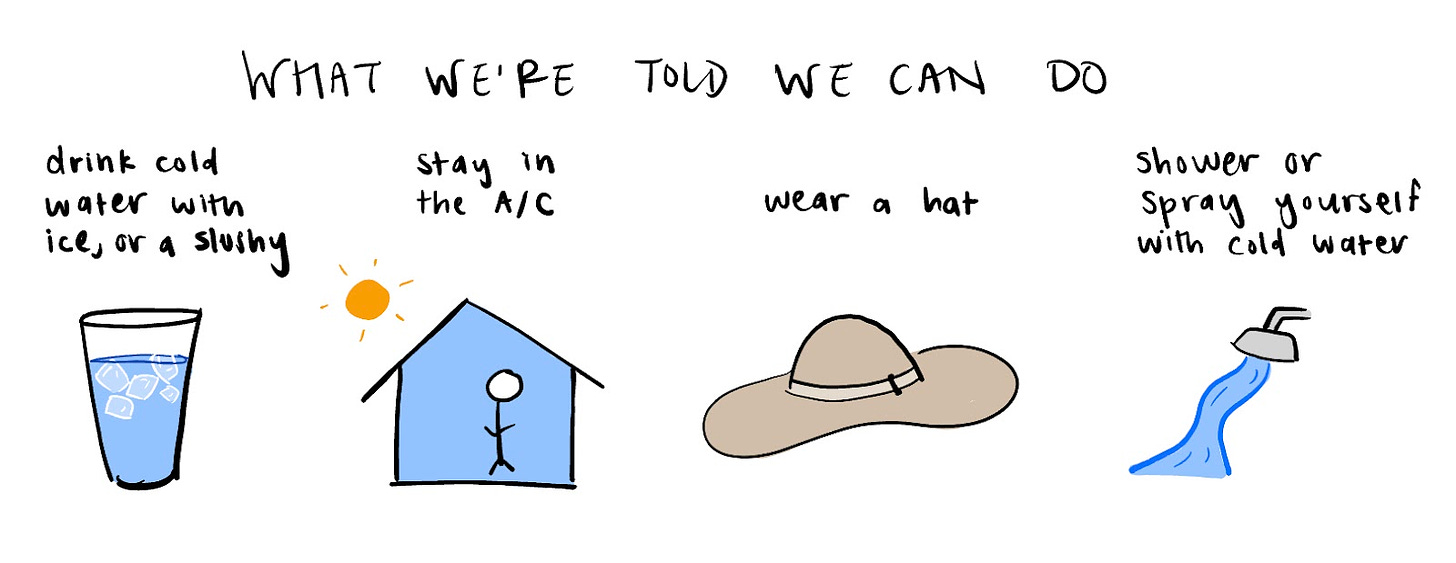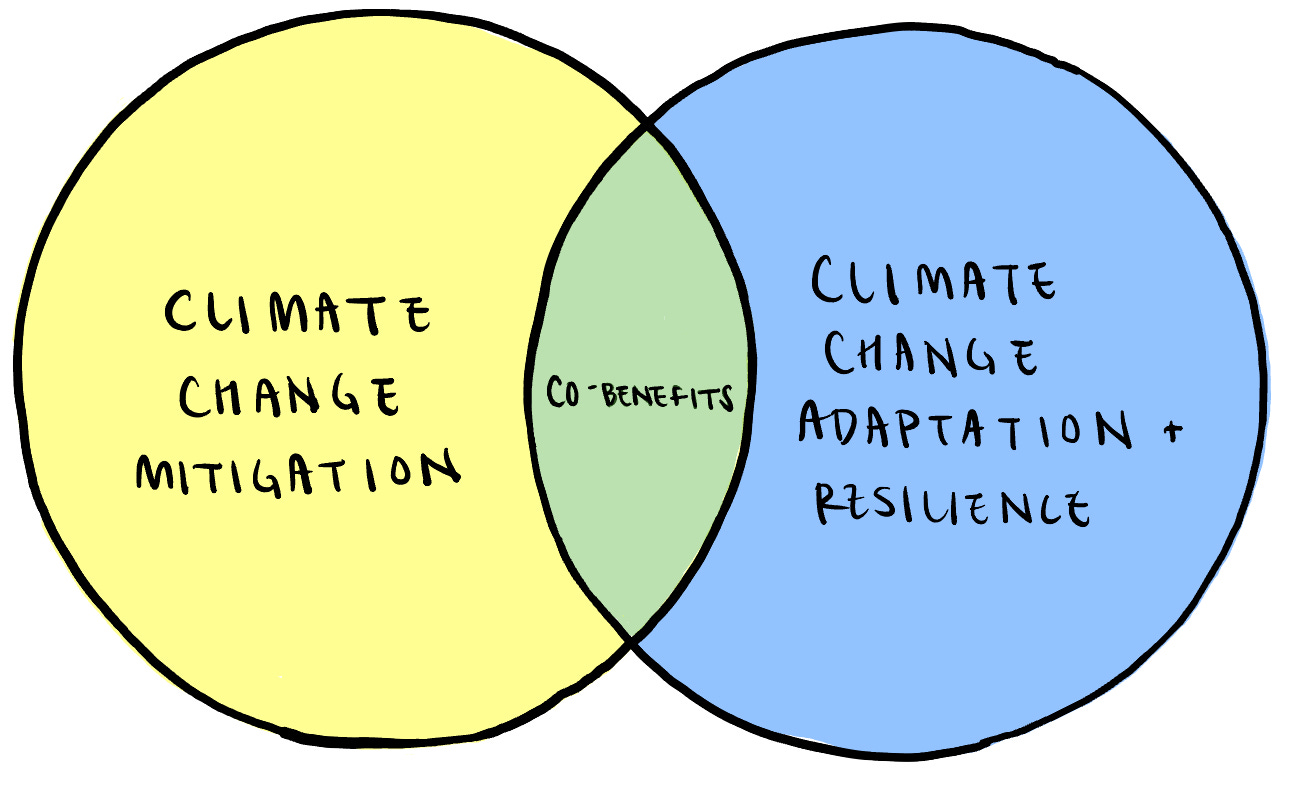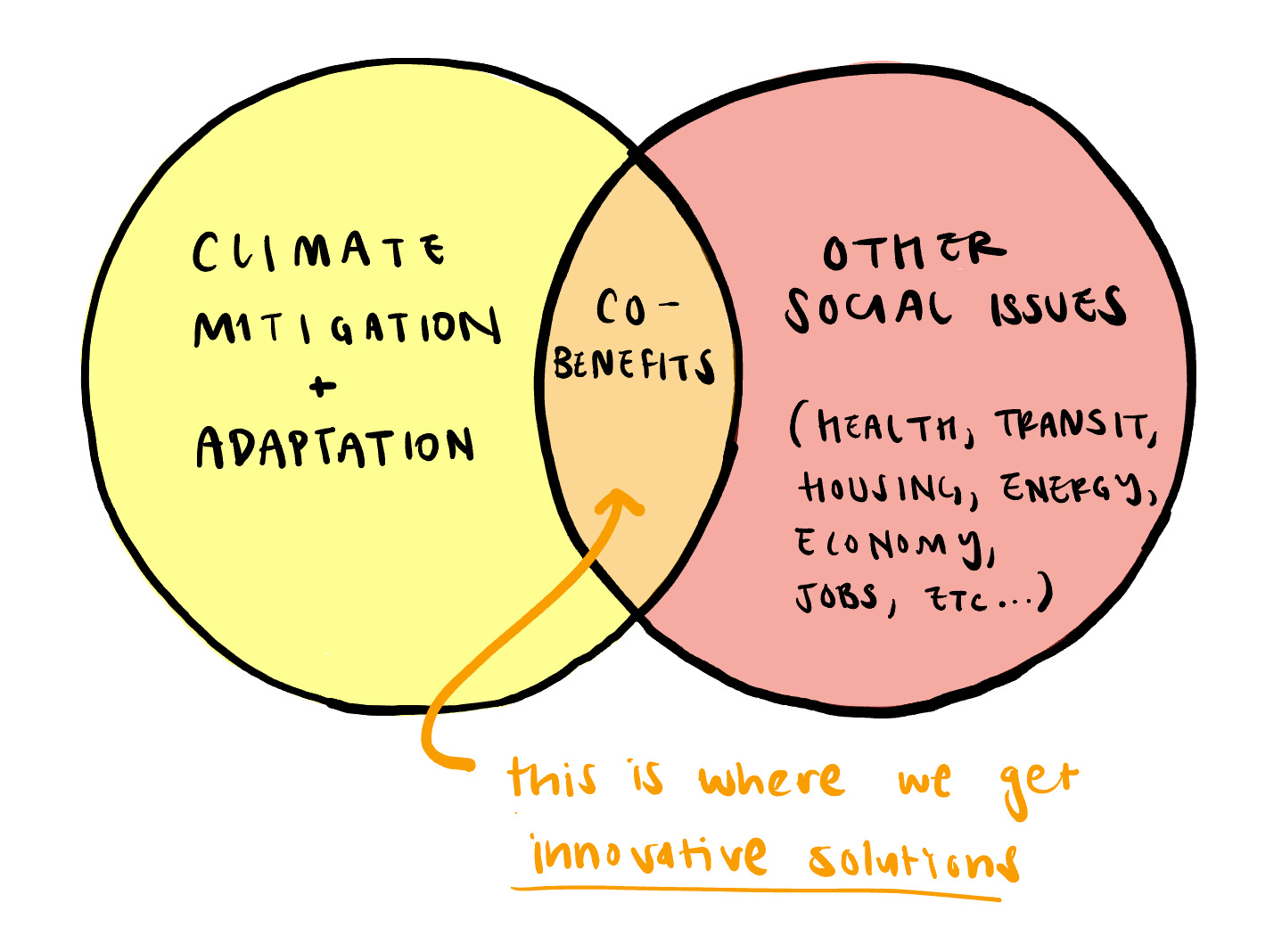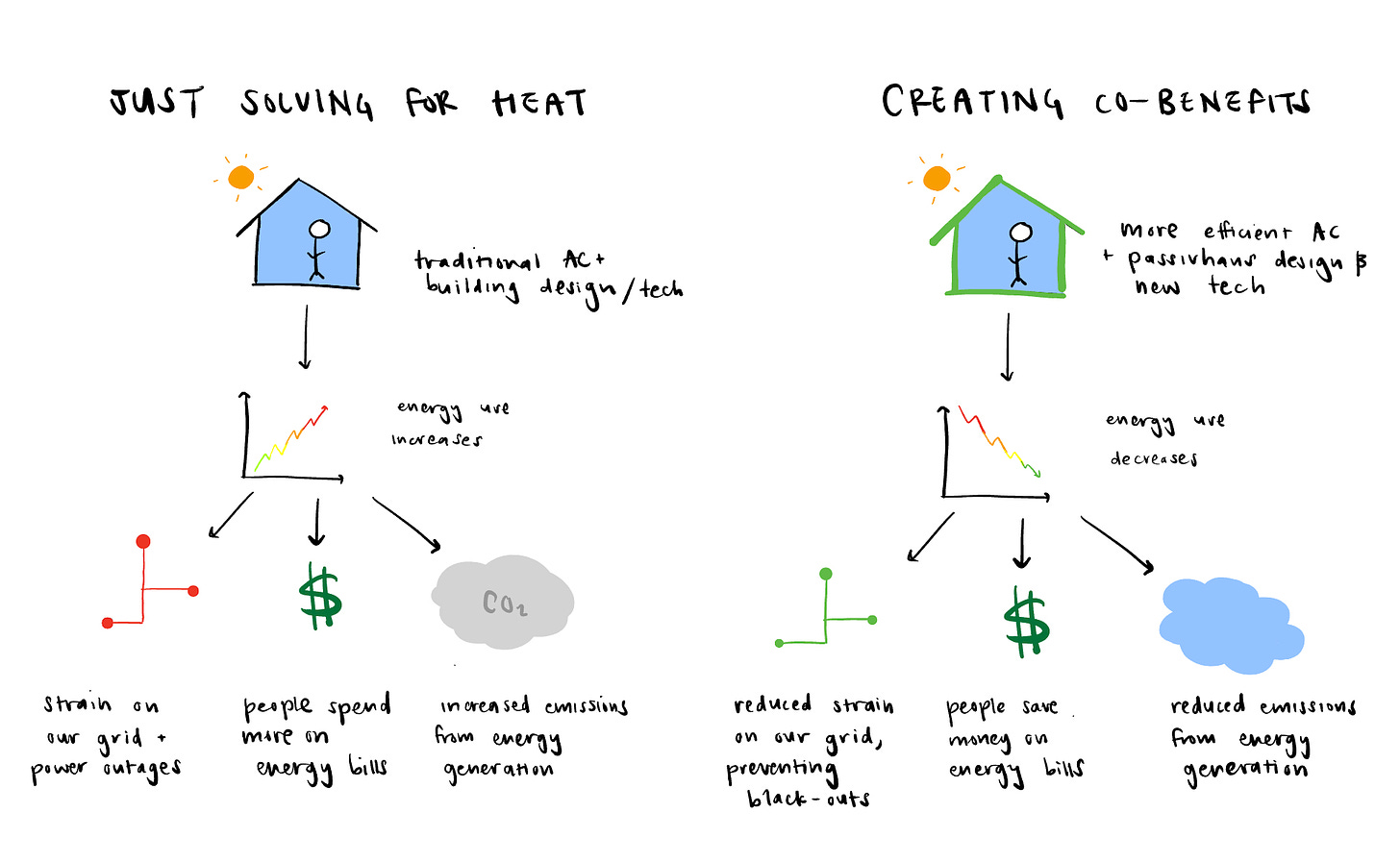Lyn and Sonam here, coming to you live from Phoenix, Arizona and Anchorage, Alaska! Welcome to our first Street Note, where we’re learning and building in public. We’re excited to share our findings as we go and test our ‘ideas-in-progress’ with you. We *actually* want to hear what you think — whether it’s constructive feedback on our ideas, something you’ve seen in your community that you want to share with the world, or people and places we should visit on our travels. You can share your thoughts by replying to this post, reaching out on Twitter or LinkedIn, or emailing us at hello@parachute.earth. Now, let's get into it.
Extreme heat is a deadly problem, and we need bold solutions.
Unless you’ve read Kim Stanley-Robinson’s The Ministry for the Future, you probably don't think of heat deaths when you think about climate change. That makes sense — heat waves don’t leave our news feeds plastered with videos of people canoeing down their streets, flames roaring through neighborhoods, or parched rivers unearthing 113 million year old dinosaur tracks.
But we're focusing Season 1 on extreme heat solutions, because heat kills more people in the US than all other climate threats. For a sense of scale:
8 million people in the US saw temperatures over 125F (52C) degrees this year. That number will be 107 million by 2053.
Extreme heat led to over 15,000 excess deaths a year in the US from 2014-2018.
In California, on an average heat day, there are 8,222 excess ER visits.
Parachute is about finding and sharing solutions, so we went looking for them in everything from city adaptation plans to climate media. Today, we're sharing the information we found through our preliminary research — and where we believe the opportunities for ambition and innovation lie.
What we've found:
There seems to be an almost concerning degree of consensus on extreme heat solutions, with one set for individuals and one set for city planners.
For example, most city websites and even articles in the New York Times all share some variation of these recommendations for individuals:
Great! Slushy in hand and hat on head, we can all rest assured that we’ve done everything we can to protect ourselves from extreme heat. According to the NYT, you have apparently exercised your individual agency to its fullest capacity!
That is, unless, you're a city planner. The policymakers shaping and re-shaping our cities can draw from a set of scalable options and resources. There seems to be a lot of consensus around these solutions, because we see the same ones in most city plans:
These solutions alone are promising and important, and we’re evaluating how they're being implemented in cities around North America for Season 1. But we think the degree of consensus for this set of solutions is a call for creativity, innovation, and collaboration between the people living in cities, and the people planning them.
A new approach:
One way to inject innovation where there’s consensus is by focusing on co-benefits.
Co-benefits have a lot of definitions. One of them is when a solution has benefits for both climate change adaptation and mitigation. You might remember this diagram from our introductory post:
But there's another definition of co-benefits: when a solution has benefits for both the climate AND other parts of people's lives, including health, the economy, social well-being, housing, tourism, and more. This is where the strongest opportunities for innovation live.
When we design for co-benefits, we have to consider people's aesthetics, agency, moral hazards, purchasing trends, behaviors, usage, and so much more.
This means we can — and must — think more creatively about the design and implementation of our existing solutions, AND think outside the box for solutions that don’t typically come to mind when addressing heat resilience.
The usual suspects, but cooler (pun intended):
🌿 Hydroponic gardens along walls that insulate buildings, cool the outdoors through transpiration, increase property values, and even grow food. Vertical Field is doing just that, while Schaduf in Cairo and Green Savers in Dhaka are weaving rooftop gardens into the crowded cityscapes of two of the largest cities in the world.
☂️ Shade structures that use trees, vines, sculptures, solar panels, and more to provide cooling, generate energy, and make spaces more beautiful. We’re especially excited by Lumiweave, which won the Women4Climate Tech Challenge (that Sonam judged) and has since come to life in Tel-Aviv, providing shade during the day and serving as a solar powered light installation at night in the city’s Atidim Park.
🚴♀️ Car-free streets that reduce heat from engines and lessen the urban heat island effect. Culdesac’s first project is under development in Tempe, Arizona and boosts a series of co-benefits including green building materials, cool pavements, and more to build a truly livable community.
🌳 Cool corridors with trees, reflective surfaces, cool walls, and water fountains to make the outdoors pleasant even in high temperatures. Lyn just visited the first ones in Phoenix! Up north in Canada, Gramener and Evergreen are collaborating to develop geospatial analytics, artificial intelligence, and data visualization tools to map changes in urban heat islands.
The unusual suspects:
⚡️ Microgrids and independent energy generation and storage that provide secure access to energy for air conditioning during peak demands. Companies like Scale Microgrid Solutions offer a suite of solutions for resilient, multi-source microgrids.
🏫 Passivhaus building practices that keep indoor temperatures comfortable in even extreme weather conditions. Projects led by Montgomery Sisam Architects in Ontario and Well Grounded Real Estate in Toronto (that our fellow Sophia Moloo is checking out) showcase how beautiful, healthy, and energy-efficient our homes can be.
❄️ More efficient air conditioning and air filtration technologies that reduce energy demand. Gradient is making heat pumps more accessible for public housing residents in New York, while Blue Frontier’s AC system reduces electricity use by 90% by combining sensible cooling with liquid desiccant dehumidification technologies.
Let's use this last example, air conditioning, to illustrate how we can better design solutions with co-benefits:
We all want our cities to be more beautiful and livable. By focusing on co-benefits, we can make solutions more exciting and desirable, which can translate to political wins, new funding streams, and widespread adoption. It also creates new opportunities for individuals to take action, whether through community groups, launching new climate tech startups, or making simple changes at home. Designing for co-benefits is important not just for innovation, but also for successful implementation.
We need to see consensus around extreme heat solutions not as the end of investigation, but the beginning. It's time for us to get curious and creative, and that needs to start here, with co-benefits. We’ll be sending Street Notes from our travels, sharing stories of innovation and implementation from folks who are shaking things up in their streets, neighborhoods, and communities. Stay tuned!










I love the illustrations! A major issue is the urban heat island effect, raising the ambient temperatures. Unfortunately, this is a consequence that is baked-in with urban planning decisions from decades ago. While greenery will help, are there any solutions to mitigate the heat islands?